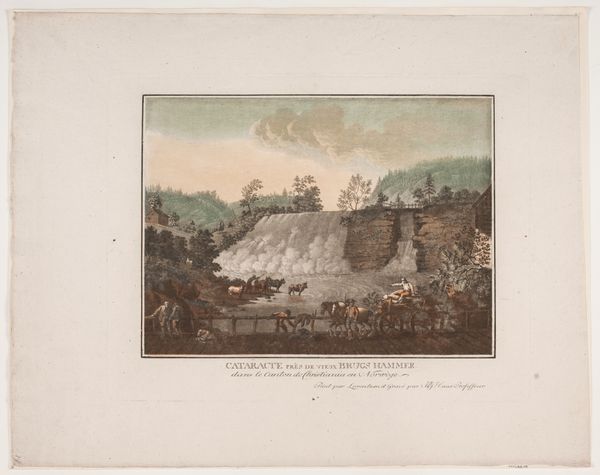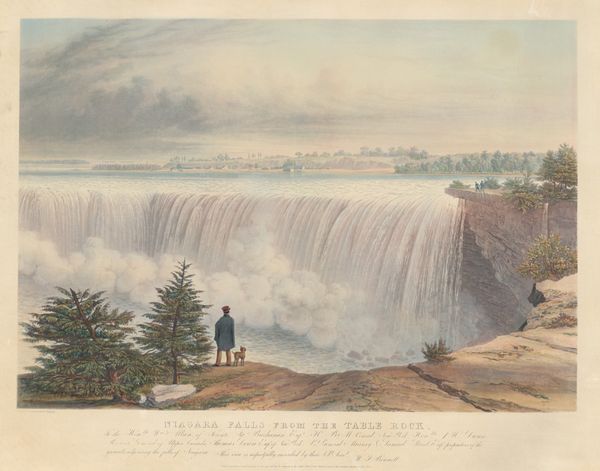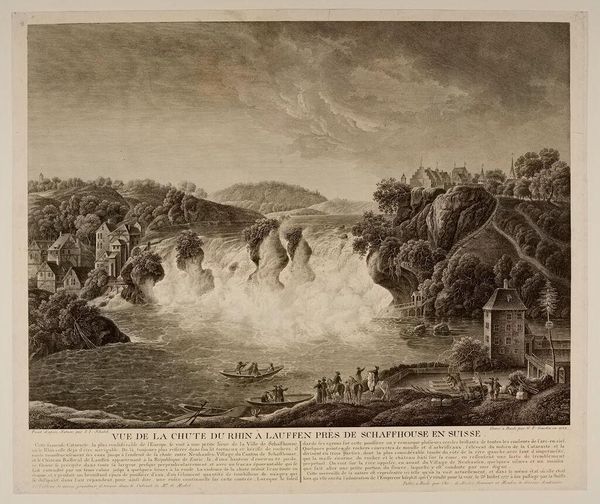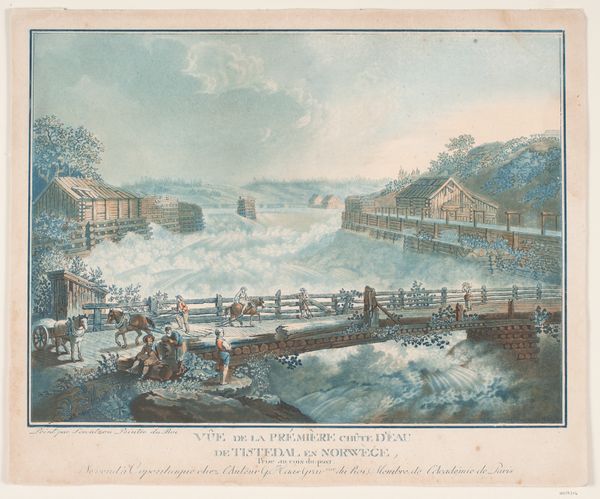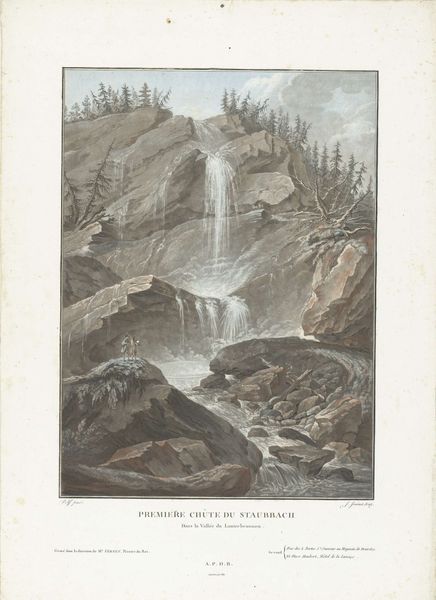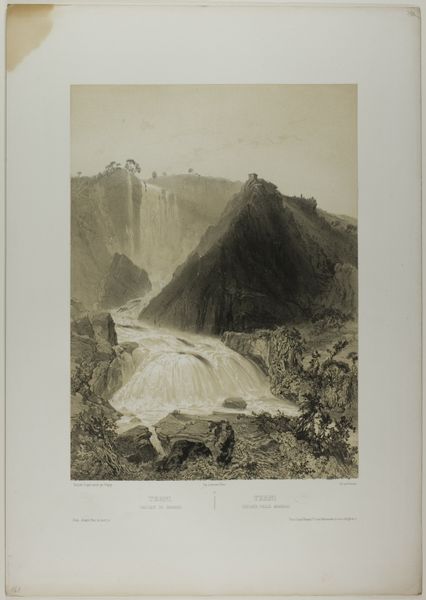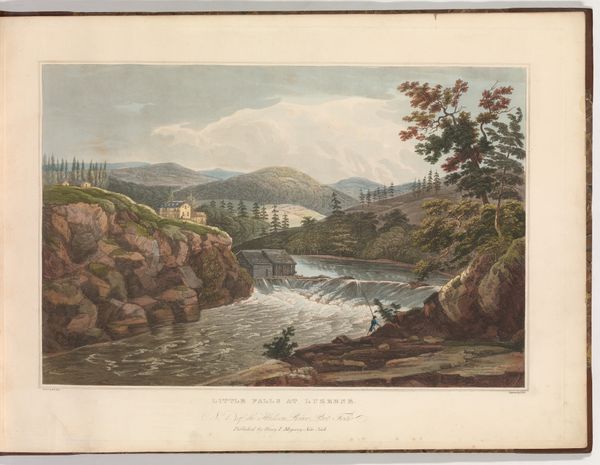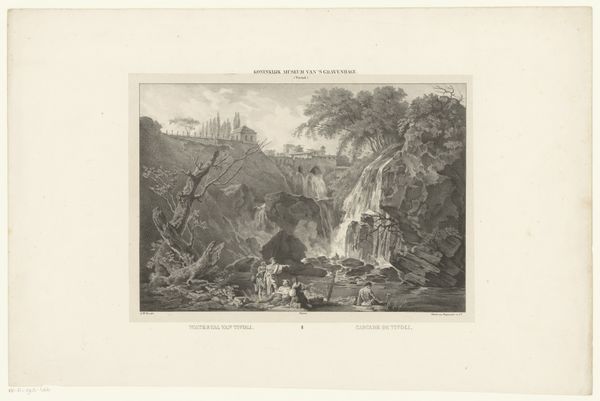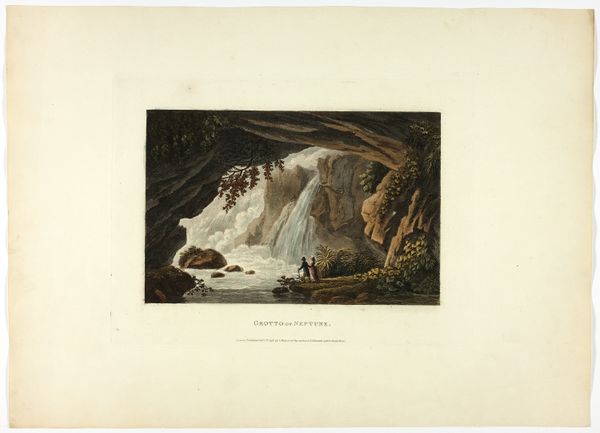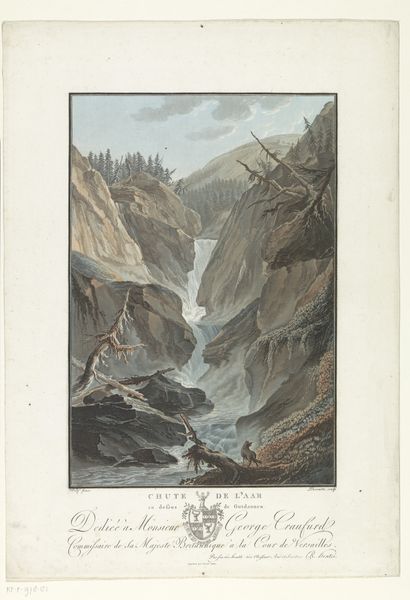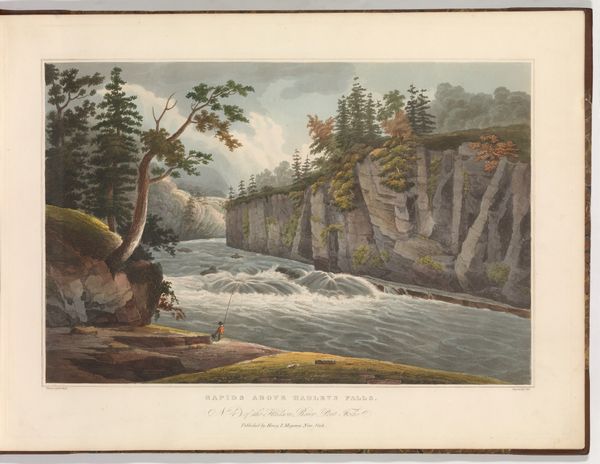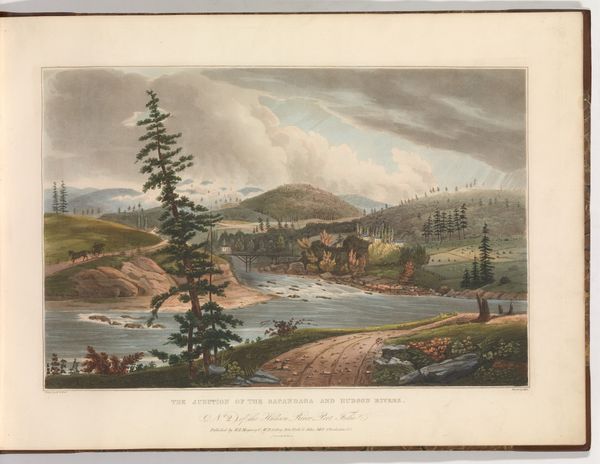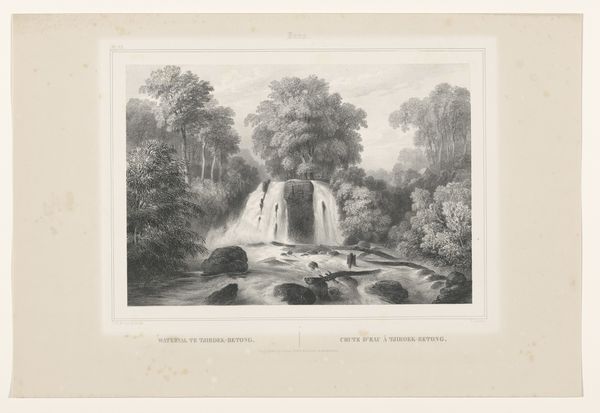
aquatint, print, watercolor
#
aquatint
# print
#
landscape
#
watercolor
#
romanticism
#
watercolor
Dimensions: 410 mm (height) x 439 mm (width) (bladmaal)
Curator: Editor: Georg Haas's "Vue de Houg-Foss," created between 1788 and 1792, beautifully depicts a Norwegian waterfall. The combination of aquatint, watercolor, and printmaking techniques gives the scene a serene, almost ethereal quality. I’m struck by how the water is being used industrially in different places throughout the image. What aspects of its creation and materials strike you? Curator: I find it fascinating how Haas chose aquatint and watercolor – mediums often associated with leisure and amateur artistry – to depict what looks like heavy industry. Notice the paper itself, likely hand-laid. The marks left behind would give the print an interesting texture. This juxtaposition makes me think about the social context of production. Who was consuming these images of Norway's industrial landscape, and what was their relationship to it? Editor: That's a very interesting point. It feels like there’s a kind of... exploitation, perhaps? Portraying this very rough landscape as this serene, almost untouched place. Do you think there’s some connection between these types of landscapes and colonization? Curator: Absolutely. Romantic landscapes were often consumed by those with the economic means to exploit them. The printing process itself – the labor involved in etching, inking, and pressing – is absent from the final image. It allows the consumer to view the landscape as purely aesthetic, erasing the labor behind the resource extraction shown. And the materiality – a readily reproducible print – further democratizes access to that consuming gaze. What is our role in engaging with such images today? Editor: That's really eye-opening. Thinking about the labor behind not only the scene, but also the production of the artwork changes how I perceive the final product. So much gets left out of what’s portrayed. I guess paying attention to these material traces offers a better appreciation of its full historical impact. Curator: Precisely! Considering materials and production helps us challenge idealized notions of art and reveals deeper connections to social and economic realities.
Comments
No comments
Be the first to comment and join the conversation on the ultimate creative platform.
